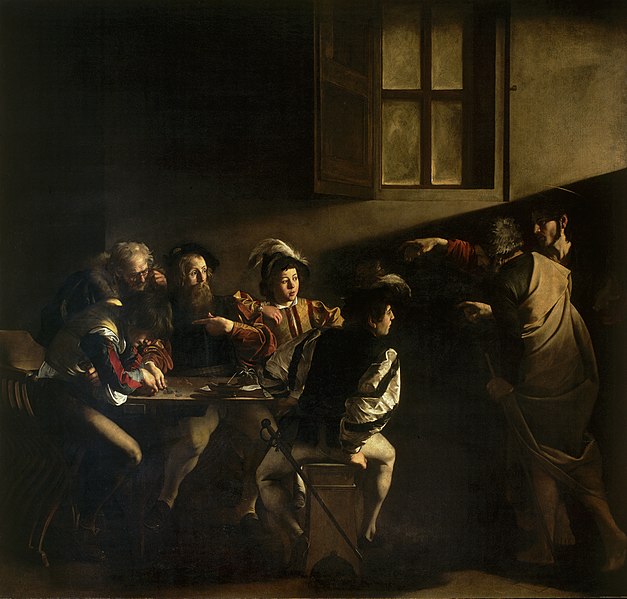
Baroque art emerged in the early 17th century in Europe and lasted until the mid-18th century, serving as a continuation of and reaction against the Renaissance. It is characterized by its complex compositions, dramatic use of light and shadow (chiaroscuro), rich colors, and emotional intensity. Baroque art aimed to evoke emotion and passion, often through direct, open, and intense engagement with the viewer.
Origins and Development The Baroque period began around 1600 in Rome, Italy, and spread throughout Europe. It was initially sponsored by the Catholic Church as a means to counter the simplicity and austerity of Protestant design, which emerged from the Reformation. The Church commissioned artworks that were emotive and theatrical to convey religious themes and messages, emphasizing the glory and power of God and the Church. This was part of the Counter-Reformation, aiming to reassert the Church’s influence in the spiritual and public life.
Characteristics
- Dramatic Use of Light: Baroque artists employed chiaroscuro and tenebrism to create dramatic contrasts between light and dark areas in their compositions, enhancing the emotional effect and the illusion of depth.
- Realism and Emotion: Unlike the idealized forms of the Renaissance, Baroque art emphasized realism and depicted intense emotions to create a more personal connection with the viewer.
- Dynamic Compositions: Baroque paintings and sculptures often feature dynamic compositions with figures in motion, creating a sense of drama and action.
- Ornamentation: Architecture and decorative arts of the Baroque period are known for their elaborate ornamentation, including intricate details, bold forms, and grandeur.
Key Artists and Works
- Caravaggio (Michelangelo Merisi da Caravaggio) – An Italian painter known for his revolutionary use of light and shadow, Caravaggio’s dramatic compositions and realistic depiction of human figures marked a significant departure from the styles of the time. Notable works include “The Calling of St. Matthew” and “Judith Beheading Holofernes.”
- Gian Lorenzo Bernini – An Italian sculptor and architect, Bernini was a leading figure in the Baroque period, known for his dynamic sculptures and contributions to Baroque architecture. His works, such as “The Ecstasy of Saint Teresa” and “Apollo and Daphne,” are celebrated for their emotional intensity and technical virtuosity.
- Peter Paul Rubens – A Flemish artist, Rubens was renowned for his vibrant, energetic paintings depicting historical, religious, and mythological subjects. Works like “The Descent from the Cross” and “The Massacre of the Innocents” exemplify his rich color palette and dynamic figures.
- Rembrandt van Rijn – A Dutch master, Rembrandt is celebrated for his portraits, landscapes, and narrative scenes, characterized by rich detail, complex emotions, and innovative use of light. Notable works include “The Night Watch” and “The Anatomy Lesson of Dr. Nicolaes Tulp.”
- Diego Velázquez – A leading Spanish painter, Velázquez served as the court painter to King Philip IV and is known for his portraits of the Spanish royal family and other notable European figures, as well as for his complex and nuanced works like “Las Meninas” and “The Surrender of Breda.”
- Francesco Borromini – An Italian architect who, along with Bernini, was instrumental in shaping Roman Baroque architecture. His innovative approach is best seen in buildings like San Carlo alle Quattro Fontane and Sant’Ivo alla Sapienza.
- Artemisia Gentileschi – One of the first women artists to achieve recognition in the Baroque period, Gentileschi is known for her powerful and often dramatic depictions of female figures from myths and the Bible, such as “Judith Slaying Holofernes” and “Susanna and the Elders.”
- Claudio Monteverdi – While primarily known as a composer, Monteverdi’s work bridged the Renaissance and Baroque periods in music, influencing the visual arts’ emotional and dramatic expression. His operas, like “L’Orfeo,” showcase the Baroque spirit in music.
- Nicolas Poussin – A French painter who spent most of his working life in Rome, Poussin is known for his classical approach to Baroque painting, focusing on harmony, order, and clarity in works like “The Rape of the Sabine Women” and “Et in Arcadia Ego.”
- Johann Sebastian Bach – Although more renowned as a composer, Bach’s contributions to Baroque music, with its complex textures and rich emotional expression, paralleled contemporary innovations in the visual arts, influencing the period’s overall aesthetic.
Influence and Legacy Baroque art significantly influenced later artistic movements, including the Rococo and Neoclassicism. Its emphasis on emotion, movement, and sensory experience has continued to inspire artists and remains a vital period in the history of art, celebrated for its contributions to painting, sculpture, architecture, and music. The Baroque’s rich legacy is evident in its enduring popularity and its impact on the visual and performing arts.